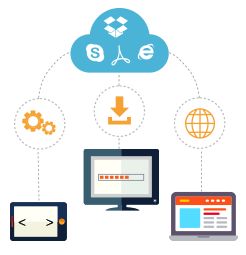Software Deployment
A lot of businesses use software applications to carry out certain tasks or activities and keep their system and network secure. In fact, using the right software applications is crucial for a business to scale up or move forward.
However, before software applications reach their intended users, they undergo a process called “software deployment.” But what is deployment in software? What does deploying a computer mean? Do they refer to the same thing?
Software Deployment – Meaning and Activities
In general, the meaning of deployment in software (or simply software deployment) refers to all the necessary steps, processes and activities directed toward making a software system or update accessible and usable for users.
The term “software deployment” is typically used in the context of a large network comprising over 20 computers. It refers to the simultaneous remote installation of software on multiple computer units or all computers in a network from one central location, which also undertakes remote monitoring and management.
These days, a lot of IT companies and software developers deploy software updates, patches and new applications using both manual and automated processes. There are two basic software deployment methods, namely:
- Deployment methods based on package creation (automated and manual software package creation)
- Deployment methods based on user access (deployment by the administrator and self-installation by the end-user)
The application deployment process comprises common activities, which include the release of the software, its installation and activation, uninstallation and deactivation, testing, update, version tracking and performance monitoring. Developers use software deployment tools to ensure they are able to provide seamless updates to their end-users. These tools simplify the process of software distribution and updates, allowing for the automation of tasks and scheduling. In turn, this gives [software] developers ample time to concentrate their efforts on writing code.
It is somewhat different from deploying a computer as the latter relates to setting up the hardware together with the software.
Computer deployment refers to the preparation and setup of a computer unit to ensure it is ready to be used for operations or productive tasks in a live work setting. In computer
deployment, the network administrator makes sure the necessary tools – hardware (computer, keyboard, CPU, mouse, etc.) and software (apps) – are complete and operational before being released to a specific user.
The Importance of Software Deployment
[Software deployment] offers several advantages for businesses and systems that make it a critical aspect of operations and security:
- Saves time: [Software deployment] can take place within a matter of hours and this also aids in hastening the installation process. When [software] is deployed easily, it eliminates the need for any sort of formal training or learning tools. There are also different installation choices that allow for rapid deployments.
- Better security: Through deployment, administrators can specify permission roles to be able to oversee and manage mission-critical or sensitive computer groups. Even task groups can be secured through task-based permission sets. It’s also possible to add more security protocols to sensitive and mission-critical activities. Moreover, updates and patches are designed to help enhance cybersecurity, especially patches that are meant to address any vulnerabilities and bugs in software applications.
- User action monitoring: With [software deployment], it’s quite easy to analyze user activities or undertake historical user activity analysis using readily available data. This information can also be used as a basis for further software enhancements or updates.
- Efficient [software] updates: Through the collection of various data encompassing common deployment activities, such as uninstalls, as well as user feedback during surveys, it becomes easier for developers to make relevant, accurate updates and perform maintenance tasks in real time.
[Deployment] is a critical aspect of utilizing [software] systems for businesses. And since every software system is different from the rest, it’s important for companies to know their needs early on and find the right applications for their business.

